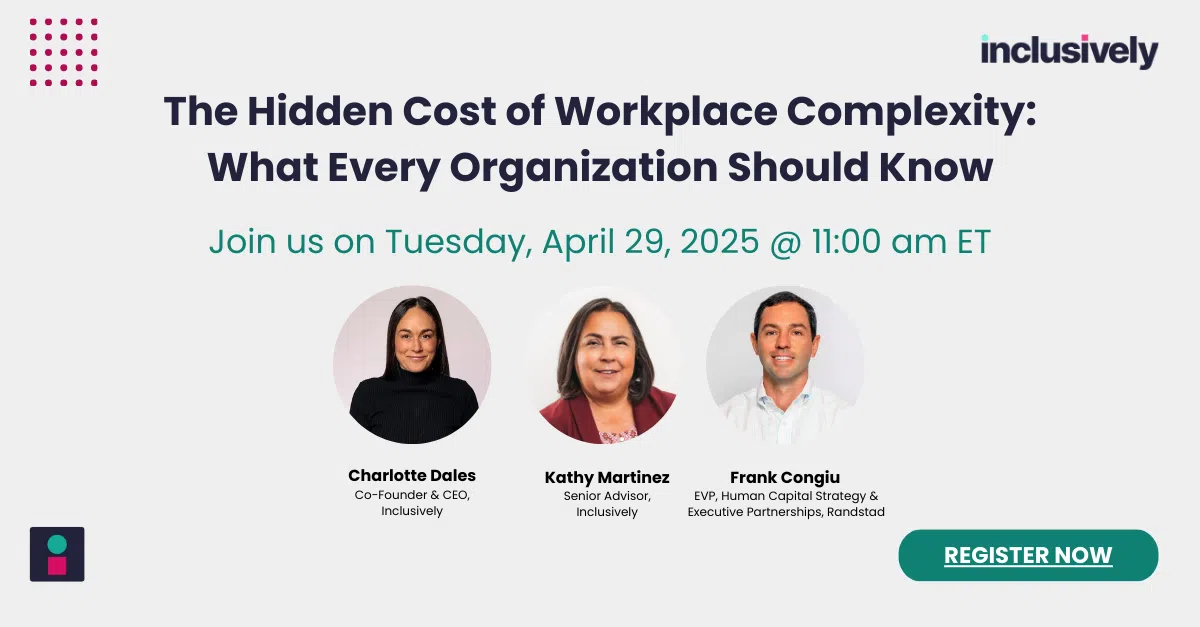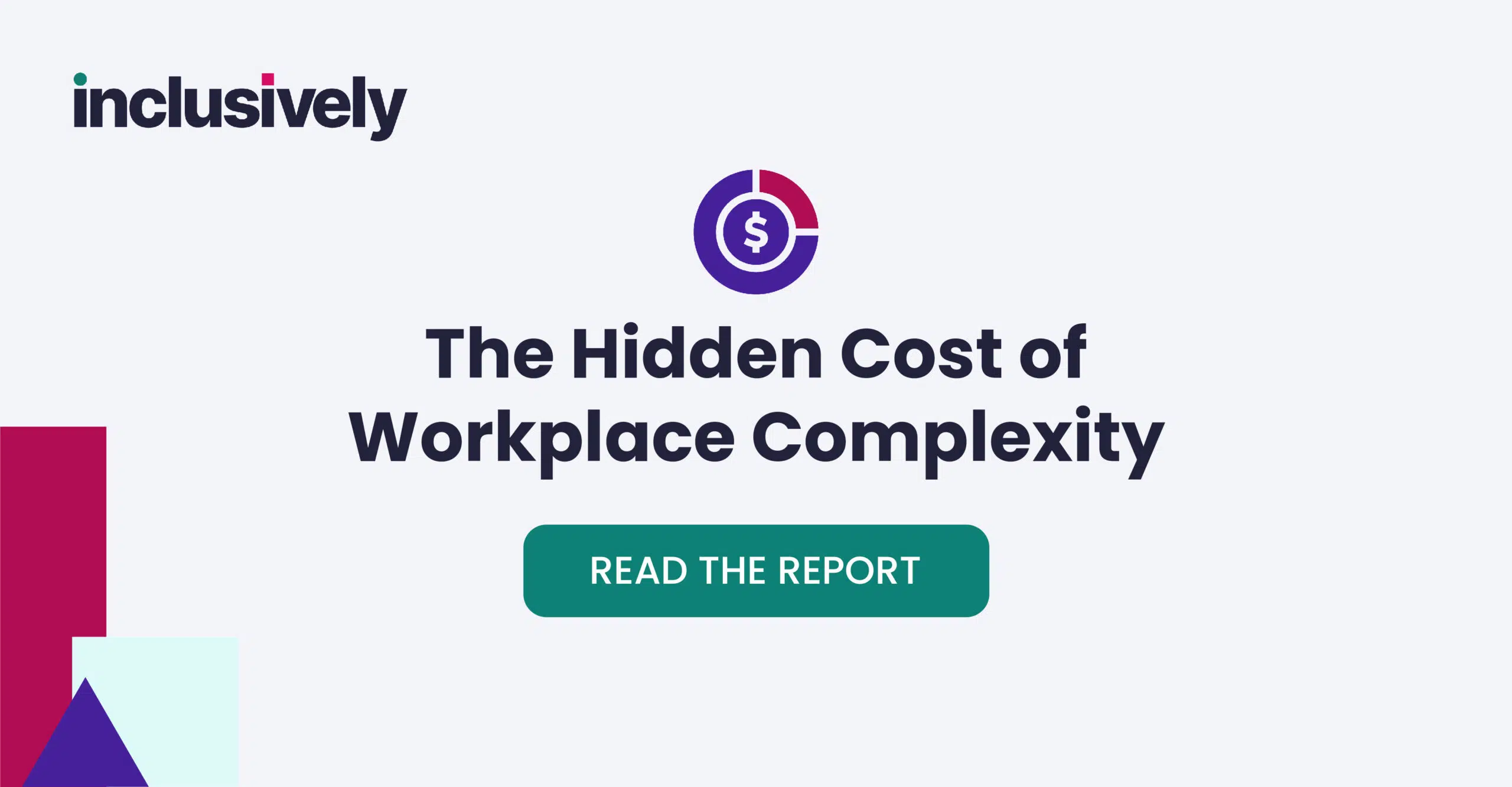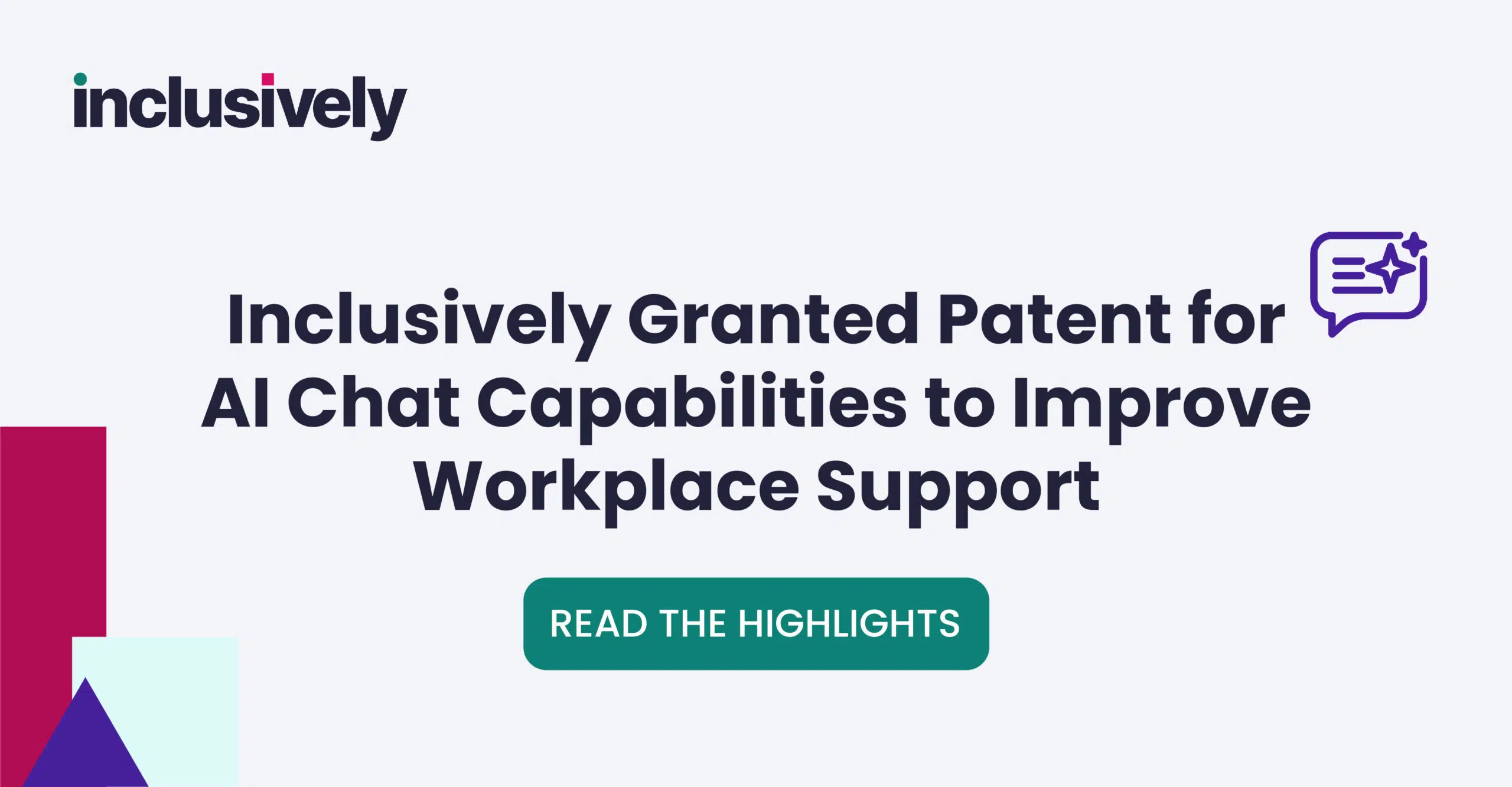The landscape of inclusivity and workforce management is shifting significantly.
This shift isn’t fleeting; it’s fundamentally reshaping how organizations attract and retain top talent.
Here, we explore five crucial trends that are setting the stage for this transformation, from the increasingly personalized ways people are doing their jobs to the pivotal role of workplace accessibility as a core business strategy.
1. The need for employee accommodations will only increase.
Today’s workforce comes from an education system that recognized and met their diverse needs. Now, these people expect their workplaces to offer similar levels of support and accommodation.
Also, workplace stigma around mental health is fading. More and more, employees are looking for environments that support their mental well-being, just as much as their physical health. Finally, misconceptions about the cost of accommodations are being dispelled: Half of all accommodations cost nothing. 43% cost $300 or less.
However, many companies are still playing catch-up. Their accommodation processes are often reactive, stuck in a compliance-first mindset, and mired in manual methods. This approach doesn’t scale well, leading to delays and backlogs. When accommodation requests drag on, it’s not just a legal risk; it strains the relationship between employees and employers, potentially leading to misunderstandings and staff turnover.
Doing nothing is a risky move for businesses. The way forward? Companies need to adopt a proactive, transparent, and scalable process for employee accommodations. This isn’t just about keeping up with the times; it’s about creating a workplace that’s genuinely supportive and productive.
2. Workplace personalization will become the standard.
The pandemic reshaped how we work. Many people found that flexible schedules, taking breaks on their terms, or working in bursts to juggle caregiving responsibilities led to a healthier and more productive way of working. For a lot of workers, there’s no going back to the old ways, and companies will seek to allow for this type of personalization in an organized, scalable way.
There’s a productivity imperative at play here: Gallup estimates that employees who aren’t engaged at work (or who are actively disengaged) cost the world $7.8 trillion in lost productivity. That makes up 11% of global GDP. By creating a more flexible and inclusive workplace, companies ensure workers are happier — and more engaged, thus offsetting those lost productivity costs.
There’s also a generational shift, as Millennials and Gen Z, who will soon dominate the workforce, are pushing for workplaces that allow personalization and flexibility, reflecting their lifestyle choices. They’re able to personalize everything else in their life. Why not work?
3. Defining and implementing caregiver support will be crucial.
The recognition and support of caregivers in the workplace will gain significant momentum in 2024.
This past June, The New York Times highlighted the significant impact of inadequate child and elder care options. This shortfall forced many women to alter their career paths, with some even leaving the workforce entirely — exacerbating hiring challenges for companies at a critical time.
The lack of accessible care solutions has broader socio-economic consequences. People who can’t afford comprehensive child or elder care, or who are overwhelmed by caregiving administrative responsibilities, are often unable to fully engage at work. This situation adversely affects their career progression. It also affects the economy.
A study revealed that nearly a quarter of the 8.8 million working family caregivers experienced either absenteeism or reduced presence at work due to their caregiving responsibilities. This led to a significant decrease in productivity, with an average reduction of one-third, equating to an estimated annual cost of $5,600 per employed caregiver.
With caregiving often extending beyond physical duties to administrative responsibilities — think of an employee who has to take care of insurance paperwork for an ailing parent during working hours — HR leaders will need to develop systems that account for this. The key will be in enabling employees to discreetly communicate their caregiving needs, helping companies address them effectively and compassionately.
4. Companies will create “glass door strategies” to show up for disabled workers.
There’s growing momentum to hire diverse talent, particularly employees with disabilities.
But historically, hiring these workers was hindered by two major obstacles: the lack of tools for employers to find these workers and a hiring process lacking in transparency and safety.
What’s been needed is a “glass door” strategy: a method where transparency is the cornerstone, fostering a sense of psychological safety from the start that ensures both employers and employees are well-informed about accommodations. For workers, this leads to psychological safety, knowing they’re meeting companies that want to hire diverse talent, including those with disabilities — and that these companies are willing to help their employees thrive.
In 2024, the tools to create this reality exist — and will be used more frequently in the hiring process.
5. Workplace accessibility will be increasingly seen as a core business strategy — not something to check off for compliance
Although there’s more work to be done, the trend towards greater accessibility in workplaces is gaining momentum. Data from Forrester provides some optimistic insights as we move into the new year.
First, there’s an increasing shift in executive mindset towards accessibility, with 60% of companies now demonstrating a commitment to creating accessible products at the highest levels — a significant rise compared to previous years.
The motivation for this shift extends beyond just adhering to compliance standards. Companies are recognizing the broader advantages of accessibility, such as in the tech industry, where 33% of firms are prioritizing accessibility to attract and retain talent. There’s also a notable increase in investment towards accessibility in design. Currently, 27% of design teams have specialists in accessibility or inclusive design, and a similar proportion intend to recruit such experts in the coming year.
The journey towards a more inclusive workplace is ongoing, with challenges still to overcome.
However, the tools, strategies, and insights needed to navigate this terrain are increasingly available and being implemented.
As companies continue to adapt and evolve, the landscape of the modern workplace promises to be more accommodating, diverse, and inclusive than ever before, reflecting a profound shift in how we value and support every member of the workforce.



